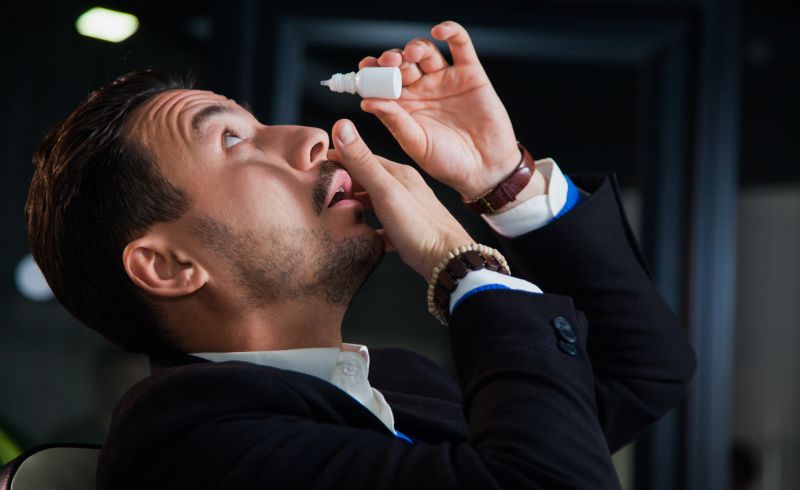What are the symptoms of Dry Eye?

What is Dry Eye?
Dry Eye Syndrome is a common condition that affects millions of people worldwide. It occurs when the eyes do not produce enough tears or when the tears evaporate too quickly, resulting in dryness, discomfort, and irritation. The symptoms of Dry Eye can vary from mild to severe and can have a significant impact on a person’s quality of life.
What are the most common symptoms?
One of the most prevalent symptoms of Dry Eye is a feeling of dryness or grittiness in the eyes. This can be accompanied by a sensation of burning or stinging, and may be worse in the morning or late in the day. Some people may also experience a sensation of heaviness or tiredness in the eyes.
Another symptom of Dry Eye is redness or inflammation of the eyes. This can be caused by irritation or infection, and may be accompanied by swelling, itching, or discharge. In severe cases, the cornea (the clear layer that covers the front of the eye) may become damaged, leading to blurry vision or even vision loss.
People with Dry Eye may also experience sensitivity to light, which can make it difficult to see in bright or sunny conditions. This can be particularly challenging for people who work outside or spend a lot of time in front of a computer screen.
In addition to these physical symptoms, Dry Eye can also have a significant impact on a person’s emotional well-being. People with Dry Eye may feel frustrated, anxious, or depressed as a result of their symptoms, and may find it difficult to engage in activities that they enjoy.
There are several factors that can contribute to the development of Dry Eye. These include age (Dry Eye is more common in older adults), gender (women are more likely to develop Dry Eye than men), certain medical conditions (such as diabetes, rheumatoid arthritis, and thyroid disorders), and environmental factors (such as exposure to smoke, wind, or air conditioning).
Treatment options for Dry Eye
Treatment for Dry Eye typically involves a combination of lifestyle changes, medication, and in some cases, surgery. Lifestyle changes may include using a humidifier, taking frequent breaks from computer work, and avoiding exposure to smoke and other irritants. Medications may include artificial tears, anti-inflammatory drugs, or drugs that stimulate tear production. Intense Pulse Light (IPL) is a latest generation technology for treating Dry Eye. Surgery may be recommended for people with severe Dry Eye that does not respond to other treatments.
In conclusion, Dry Eye is a common condition that can have a significant impact on your quality of life. The symptoms of Dry Eye can vary from mild to severe and may include a feeling of dryness or grittiness in the eyes, redness or inflammation of the eyes, sensitivity to light, and emotional distress. Treatment for Dry Eye typically involves a combination of lifestyle changes, medication, and in some cases, surgery. If you are experiencing symptoms of Dry Eye, get in touch with us at Freedom Eye Laser to determine the underlying cause and develop an appropriate treatment plan.



